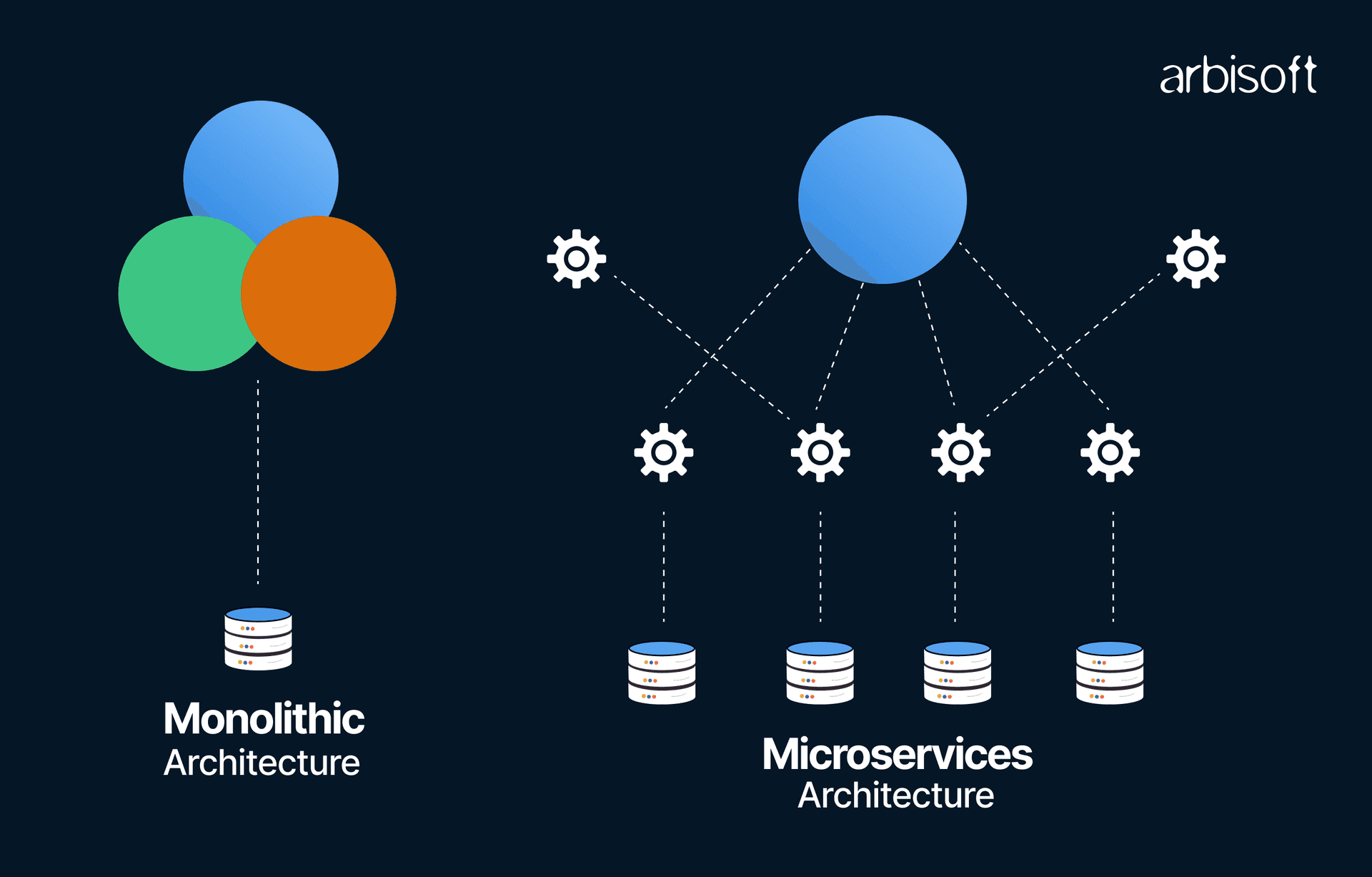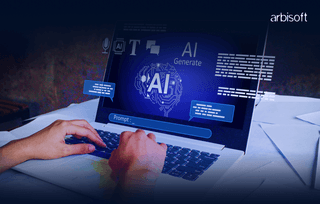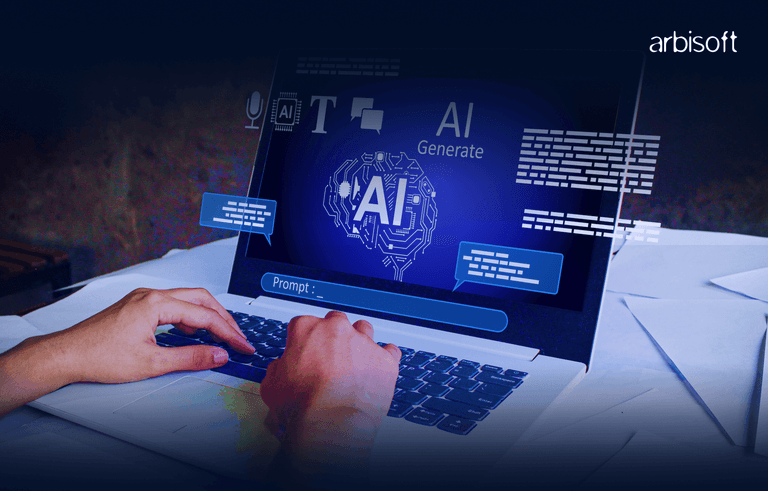We put excellence, value and quality above all - and it shows




A Technology Partnership That Goes Beyond Code

“Arbisoft has been my most trusted technology partner for now over 15 years. Arbisoft has very unique methods of recruiting and training, and the results demonstrate that. They have great teams, great positive attitudes and great communication.”
Monolithic vs. Microservices Architecture: Which is Better for Scalable Applications?

In an era where scalability is fundamental to any organization's success, the debate between monolithic and microservices architectures remains as relevant as ever in 2025.
If your architecture cannot keep up, your thriving app can crash under the load easily. This is where the Monolithic vs. Microservices debate takes the stage. Both architectures have shaped how we build applications, but they couldn’t be more different. Monolithic systems bundle everything together—like a one-stop shop. Microservices, on the other hand, are like a team of specialists, each handling one thing exceptionally well.
So, which one is better for creating applications that will not only survive but thrive in 2025 and beyond?
This blog dives into the pros, cons, and real-world scenarios of both approaches. By the end, you’ll know which architecture aligns with your scalability goals, budget, and long-term vision. Let’s help you make the right call for your next big project.
Not sure which architecture fits your business?
Take our quick checklist to decide whether Monolithic or Microservices is the best choice for your scalability, growth, and development needs.

Whether you're scaling, innovating, or optimizing, this checklist will guide you to the best solution for your business.

Understanding Monolithic and Microservices Architectures
Monolithic Architecture
It’s the traditional way of building software, where everything is tightly interconnected.
This setup works great when you're just starting out. It’s simple to develop, easier to test, and quick to launch. Need to add a new feature? It’s just another function within the same codebase. That’s why many startups favor it in the beginning.
But here’s the catch - as your user base grows, so do the cracks in the system. Scaling becomes a nightmare because you’re essentially duplicating the entire system—even if only one part needs more resources. Updates slow down, and isolating a single failure is like finding a needle in a haystack.
According to a 2024 survey by O’Reilly, 60% of organizations with legacy monolithic systems reported downtime issues when trying to scale.
Microservices Architecture
In a microservices architecture, each part is a self-contained service—independent but part of a bigger picture. Instead of bundling everything together, you split your application into smaller, manageable pieces.
Each service operates independently, communicating through APIs. One handles payments, another manages user accounts, and another tracks orders. And the best part - if one service crashes, the rest keep running!
Microservices are perfect for scalability. When your app goes viral, you can scale specific services instead of the entire system. For example, e-commerce giant Amazon scaled its order-processing service independently to handle millions of transactions during Prime Day.
But there’s a trade-off. Microservices come with complexity. You’ll need skilled developers, a solid orchestration system like Kubernetes, and robust monitoring tools. It’s also costlier upfront, but in the long run, it pays off.
A 2025 report by Flexera highlights that 75% of enterprises using microservices achieved a 35% reduction in time-to-market for new features.
Monolithic is your friend if you’re testing the waters or running a small app. But if you’re building something big, dynamic, and built to last, microservices might just be the right choice.
Need help deciding? Let’s dive deeper into their scalability potential in the next section!
Scalability is the New Buzz
In 2025, scalability is no longer optional—it’s the backbone of modern applications. Businesses that fail to scale quickly lose users to competitors who can.
Scalability ensures your app grows with your audience. Whether it’s a sudden traffic spike or steady user growth, a scalable system adjusts resources dynamically.
Take Netflix, for example. Its recommendation engine processes billions of requests daily, scaling effortlessly to handle peak streaming times. Similarly, Shopify empowers thousands of online stores to run massive sales events without breaking a sweat.
Scalability Market Trends in 2025
1. Distributed Systems
Global traffic is at an all-time high. The ultimate solution to this is to get a distributed system that ensures everything is running smoothly with seamless performance no matter where the users are. The techniques employed by companies such as TikTok have made it possible for them to ensure that all the users connected to the app will have the same experience.
2. Cloud-Native Apps
Cloud-native apps are redefining scalability. With tools like Kubernetes and Docker, businesses can scale specific components of their applications without stressing the entire system. Gartner predicts that by 2025, over 90% of new apps will be cloud-native.
3. AI-Driven Scaling
AI isn’t just for chatbots—it’s revolutionizing scalability. AI-powered tools monitor system performance and predict traffic surges before they happen. Platforms like AWS Auto Scaling leverage AI to allocate resources in real time, reducing downtime and costs.
85% of businesses adopting microservices report a 40% increase in scalability compared to monolithic systems. - Gartner
Cloud migration is in full swing, with 80% of enterprises adopting hybrid or multi-cloud strategies to meet scalability demands. - Flexera
Global spending on cloud infrastructure is projected to reach $150 billion, highlighting the priority scalability holds in the tech landscape. - Statista
Comparing the Two - Which is Better for Scalability?
Scalability can make or break your application. Whether you’re aiming for a niche audience or a global user base, the architecture you choose plays a huge role in how easily your app can grow.
Monolithic Scalability
Monolithic architecture can handle growth, but only to a point. It’s like upgrading an engine. You can tweak the engine, but there’s a limit to how fast and far it can go.
Monolithic systems are great for small-scale applications or startups. They’re simple, cost-effective, and get the job done in the early stages. But when your app takes off, the cracks start to show.
Every time you need to scale, you’re scaling the entire system. If your app needs more capacity for payment processing, then you have to scale the user authentication and analytics systems too. This one-size-fits-all scaling leads to resource wastage and higher costs.
The Challenge - Scaling monolithic systems becomes inefficient as your application grows. According to a 2025 TechRadar report, over 70% of startups that begin with monolithic architectures face significant downtime during scalability upgrades.
Microservices Scalability
Each service in a microservices architecture is independent. You can scale specific components based on demand. For example, if your video streaming service experiences a surge, you can allocate more resources to that service alone without touching the rest of the system.
Netflix can independently scale its video encoding, recommendation engine, and user accounts. This modular approach ensures that millions of users can stream seamlessly during peak hours.
A 2025 study by DevOps Digest found that companies moving to microservices reduced time-to-market by 35% while achieving 50% better resource utilization compared to monolithic systems.
When to Choose Either
Here is a table to compare when to choose Monolithic vs. Microservices architectures based on various factors:
Factor | Monolithic Architecture | Microservices Architecture |
Best for | Simple, small-scale applications or MVPs. | High-demand, global, or complex applications. |
Team Size | Small teams with generalist developers. | Large teams with specialized skills (e.g., DevOps, Kubernetes). |
Development Speed | Faster initial development due to a single codebase. | Slower initial setup due to service segmentation and orchestration. |
Scalability | Limited—requires scaling the entire system. | High—scale individual services independently. |
Cost | Lower upfront costs. | Higher initial investment but better cost efficiency over time. |
Resource Management | Simple—requires less expertise and fewer tools. | Complex—needs advanced tools like Kubernetes and monitoring systems. |
Deployment | Slower—requires redeployment of the entire application. | Faster—supports continuous deployment of individual services. |
Failure Isolation | Difficult—one failure can impact the entire application. | Easy—failures in one service don’t affect others. |
Innovation Speed | Limited—any change impacts the whole system. | High—teams can innovate on services independently. |
Use Case Examples | MVPs, internal tools, or apps with low complexity. | E-commerce platforms, streaming services, and SaaS applications. |
Market Insights | - 65% of startups prefer monolithic for MVPs (Startup Trends 2025). - Ideal for companies with limited technical expertise. | - 75% of enterprises adopting microservices achieve 40% faster feature releases (Flexera 2025). - Used by leaders like Netflix, Uber, and Amazon. |
Setup Complexity | Low—suitable for startups with limited resources. | High—requires orchestrators, APIs, and containerization. |
Challenges and Innovations in 2025
Every architectural choice has its hurdles. While monolithic and microservices architectures each come with their own set of challenges, 2025 brings new innovations that address some of these issues head-on. Let’s explore them here:
Monolithic Challenges
For monolithic systems, the challenges in 2025 are more about keeping up with the times than solving age-old issues.
1. Increasing Irrelevance for Modern Applications
As businesses shift toward cloud-native, scalable solutions, monolithic architectures often feel outdated. They struggle to meet the demands of global traffic, multi-device access, and seamless integrations. A legacy CRM system built on monolithic principles might falter under the weight of real-time analytics or global user demands.
A 2024 report by Cloud Evolution Insights states that only 15% of new applications are built using monolithic architectures, with the rest favoring modular and scalable designs. -Cloud Evolution Insights
2. Legacy System Management Difficulties
Updating the old monolith software is usually a tough task. It necessitates significant work, the utilization of expert tools, and trained teams to be converted to microservices. This is one of the big challenges that companies have systems that are old enough to have existed for several decades.
In 2025, 80% of companies transitioning from monoliths to microservices will require third-party modernization tools or services. - Gartner
Microservices Challenges
Despite their advantages, microservices have their hiccups too. They come with their own set of complexities.
1. Orchestration Complexities
Managing distributed systems can get overwhelming. Tools like Kubernetes make life easier, but orchestrating dozens—or even hundreds—of services requires skilled DevOps teams and robust monitoring systems. A microservices-based e-commerce platform may need to synchronize services for inventory, payment, and shipping in real-time. These steps add layers of complexity.
If you are looking for a Complete DevOps Roadmap for Organizational Implementation, then this read might benefit you.
2. Security Vulnerabilities in Distributed Systems
Every microservice is a potential entry point for attackers. In distributed systems, ensuring security across APIs, databases, and communication layers becomes a critical challenge. According to the 2025 Cybersecurity in Cloud Systems Report, 60% of cyberattacks target poorly secured microservices APIs.
Innovations Changing the Game
2025 isn’t just about challenges—it’s about groundbreaking solutions that help businesses overcome them.
1. AI Tools for Automated Microservices Management
AI has made everything easier through the mode of automatic coordination and monitoring. Tools such as Google Anthos and AWS App Runner, which are based on AI, are responsible for scaling, monitoring problems, and gathering data on resource utilization automatically.
2. Serverless Architectures Complementing Microservices
Serverless computing is a natural ally for microservices, allowing developers to run functions without worrying about managing infrastructure. This complements microservices by reducing latency and costs for short-lived tasks.
Trends for 2025 and Beyond
As technology evolves, so do the strategies businesses use to build scalable and resilient systems. The future isn’t just about choosing monolithic or microservices—it’s about blending innovation with practicality.
The Rise of Hybrid Architectures
Who says you have to choose? Hybrid architectures are gaining traction, combining the best of monolithic and microservices approaches.
What’s the Idea? - Keep a monolithic core for stable, critical operations while extending features or scaling through microservices.
Many banks maintain monolithic systems for secure core banking operations but use microservices for customer-facing features like chatbots or mobile apps.
A Hybrid Cloud Adoption Survey (2025) found that 60% of large enterprises are experimenting with hybrid architectures to balance stability and scalability.
Emerging Tools Making Waves
The complexity of managing distributed systems has led to a wave of innovative tools.
Service Meshes (e.g., Istio, Linkerd)
Service meshes simplify communication between microservices, ensuring security, load balancing, and observability. They reduce the overhead of managing microservices, making it easier for teams to scale their applications without worrying about internal communications.
Advanced Monitoring (e.g., Prometheus, Grafana)
Observability tools are evolving to give businesses deeper insights into system performance. For instance, Grafana’s real-time dashboards help enterprises track their health, predict failures, and optimize performance, saving an average of 25% on downtime costs (Tech Performance Insights, 2025).
Now let’s dive into a few predictions that are expected to take course.
1. Microservices Adoption to Hit 90% by 2027
Large enterprises are embracing microservices as the go-to architecture for agility and innovation. By 2027, 9 out of 10 large enterprises will have adopted microservices in some form (Forrester Research, 2025).
2. Focus on Eco-Friendly, Cost-Efficient Systems
Sustainability is no longer optional—it’s a business imperative. Companies are optimizing architectures to reduce carbon footprints and energy consumption. The 2025 Green Tech Report predicts that 50% of enterprises will prioritize eco-friendly architecture design by 2026, driven by regulations and customer demand.
3. Growing Importance of Edge Computing with Microservices
As IoT and 5G adoption grow, edge computing is becoming critical for real-time applications. Microservices are well-suited for deployment at the edge to handle localized processing efficiently. According to IDC (2025), edge computing workloads will account for 40% of microservices deployments by 2026.
The Right Fit for Your Business
The comparison of monolithic and microservices architectures is not a matter of which is the best in the absolute sense but about what’s better for you. Each of these methodologies has its pros and cons and the selection is based on your specific business needs, resources, and future goals.
If you’re running a straightforward application with a tight budget and a small team, a monolithic architecture might be your best bet. The simplicity and lower management overhead can help you focus on delivering value quickly. However, if your business is scaling rapidly, dealing with global traffic, or experimenting with continuous innovation, microservices offer the flexibility and resilience to keep up.
























